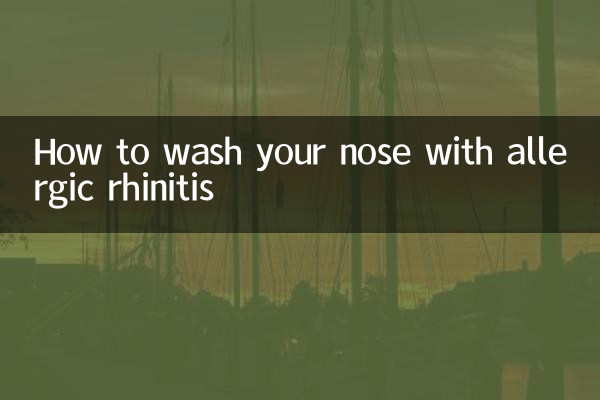How to wash your nose with allergic rhinitis
Allergic rhinitis is a common nasal disease, mainly manifested as nasal congestion, runny nose, sneezing and other symptoms. Nose washing is one of the effective ways to relieve symptoms of allergic rhinitis. This article will introduce in detail the steps, precautions and related data for nose washing to help patients wash their nose scientifically.
1. The function of washing your nose

Washing your nose can help clear allergens, secretions and bacteria in the nasal cavity, reduce the inflammatory response of the nasal mucosa, and thus relieve symptoms such as nasal congestion and runny nose. Here are the main functions of nose washing:
| effect | illustrate |
|---|---|
| Clear allergens | Reduce the irritation of allergens such as pollen and dust mites to the nasal mucosa |
| Dilute secretions | Soften and remove mucus from the nasal cavity to relieve nasal congestion |
| Relieve inflammation | Reduce congestion and swelling of the nasal mucosa |
| Prevent infection | Reduce bacteria and viruses in the nasal cavity |
2. Steps to wash your nose
To wash your nose, you need to prepare a special nasal washer and normal saline. The following are the specific steps:
| step | Operation Instructions |
|---|---|
| 1. Prepare nasal soap | Use medical saline or homemade saline (concentration 0.9%) |
| 2. Adjust posture | Lean forward, tilt your head slightly to one side |
| 3. Rinse the nasal cavity | Align the nose washer head at one nostril and slowly inject salt water |
| 4. Exhaust liquid | Salt water flows out from the other nostril or mouth, blow your nose gently |
| 5. Repeat the operation | Repeat the other nostril |
3. Things to note
Although it is simple to wash your nose, you need to pay attention to the following things to avoid discomfort or damage your nose:
| Things to note | illustrate |
|---|---|
| Water temperature control | The temperature of salt water should be close to the body temperature (about 37℃) |
| Flush frequency | 1-2 times a day, excessive rinsing may damage the nasal mucosa |
| Avoid exertion | Avoid excessive force during rinsing to prevent liquid from entering the middle ear |
| Equipment cleaning | After use, the nasal washer needs to be thoroughly cleaned and dried |
4. Frequently Asked Questions about Nose Washing
The following are the frequently asked questions and answers to patients about nose washing:
| question | answer |
|---|---|
| Will it hurt when washing your nose? | It will not hurt properly, and there may be slight discomfort when using it for the first time |
| Can children wash their noses? | Yes, but you need to use a special nasal scrubber for children under the guidance of adults |
| Can nose washing cure allergic rhinitis? | Not cured, but it can effectively relieve symptoms |
| Can tap water be used for nasal washing liquid? | No, tap water may contain bacteria, normal saline is required |
5. Summary
Nose washing is a safe and effective way to relieve the symptoms of allergic rhinitis, but you need to master the correct operating steps and precautions. Patients should choose the appropriate frequency and tools for nasal washing according to their own situation and perform it under the guidance of a doctor. If the symptoms do not relieve or worsen after washing your nose, seek medical attention in time.

check the details

check the details